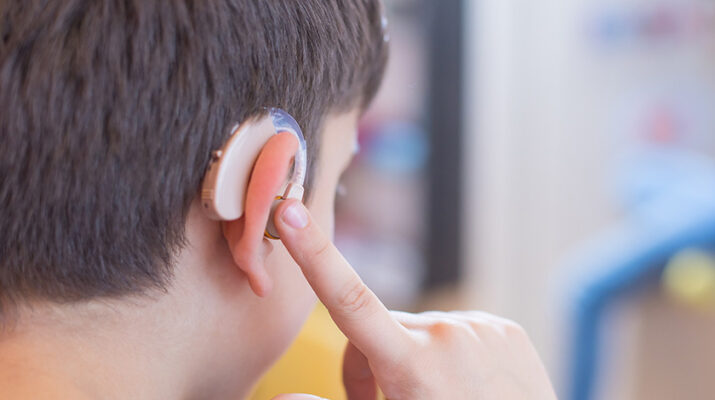By Deborah Jeanne Sergeant
Hearing evaluations are routine for children born in US hospitals. However, hearing loss acquired afterwards can go undetected. It’s important to catch hearing loss early, as young children are at a crucial developmental stage.
“Early treatment and detection are better in the long haul,” said Kristopher Rookey, hearing instrument specialist with Port City Hearing in Oswego. “We want to catch it sooner than later. If they are having trouble, they might be disengaged in school and having trouble. Getting them hearing sooner is important.”
It can be easy to miss a hearing loss, especially if parents are not aware of some causes of hearing loss.
Some children have an anatomical predisposition to ear infections and if they develop them chronically, along with the typically impairment of hearing, they may miss numerous months of hearing clearly and learning language.
“Fluid can build up and they need tubes in their ears,” Rookey said. “Chronic ear infection can cause nerve damage.”
Causes of permanent hearing loss include illnesses such as mumps, measles and other childhood disease that are preventable with routine childhood vaccinations. A high fever that goes unchecked can destroy the auditory nerves and thus the child’s hearing. A fever treated with Tylenol that remains higher than 103 degrees Fahrenheit in otherwise healthy children warrants immediate medical attention. Seek care for any fever in babies younger than 3 months old. For those 3 to 6 months, 102 Fahrenheit is considered a high fever.
“A sign indicative of potential hearing loss after the birth screening is if a child isn’t localizing to sound,” said Anna Fyalkowski, audiologist with Syracuse Hearing Solutions. “If you call the child’s name and they’re not turning their head appropriately. Not startling to loud sounds, like if a dog barks or you’re clapping and they don’t move their hands or close their eyes tight.”
Early milestones include infants startling at louder noises and by 3 to 6 months, beginning to turn their heads towards the source of sounds to localize it. By 6 to 12 months, children should start recognizing familiar words and respond to their names.
Sometimes, parents test their children’s hearing by only using loud sounds. However, everyday speech volume, between 55 and 65 dB should be loud enough to hear. Having to speak louder to be heard may indicate mild hearing loss and warrant seeing a professional.
“If there’s any delay in speech production according to milestones, something could be going on,” Fyalkowski said.
Parents also should seek an evaluation for children who ask for parents to repeat what they say, turn up the TV or other devices, or their teachers at school say they do not pay attention.
“Observe the child to see if the child pays attention to speech,” said Douglas G. Brown, audiologist and owner of DB Audiology Associates, PC in Syracuse. “Is the child looking at the mouth?”
This may indicate that the child is using visual cues to improve understanding of speech.
Brown said that by a year old, a child should be able to follow two-part requests, such as “Get the ball and place it on the table” as well as follow simple conversations.
Sometimes other family members are better able to identify hearing loss in children than their own parents.
“Parents are so familiar that they may see behavior that they attribute to other things,” Brown explained.
Any parent with concerns about their child’s hearing should seek a screening. Pediatrician offices can run basic screening tests and an audiologist can provide more in-depth testing and evaluation.

